
Another year of video games has gone by, and this one has been markedly different for me. While I had more free time than previous years, I wound up spending less of it on 2024’s games than I thought I might. I also put a lot of time into some especially long games, something I tend to avoid. But mostly, I spent a good chunk of time on my Backtracking project, a series of sort-of-reviews, sort-of-reflections on older titles that I've finally been plucking out from my backlog.
That said, I still found plenty from 2024 that I want to talk about. For the first time, I’m also allowing myself to include games that I didn’t finish. Finishing games is only one small piece of enjoying them, and sometimes even very good games are too damn long. So without further ado, let’s get to the list!
Honorable Mentions
Every year, there are things that just barely miss the list; games I didn’t get quite far enough into, games I liked but couldn’t fit on the list, games I missed entirely. Here's a few I want to mention:
- I Am Your Beast — I’m only about halfway through this game, and while I haven’t been too harsh on myself about completing games this year (as you’ll see below), I wasn’t quite ready to decide where I land. So far, it’s an absolute blast to play and it’s wrapped in stylish and relentlessly badass packaging.
- Astro Bot — It definitely hurts a little bit to leave this off the list, especially when so many other interesting 3D platformers passed me by this year, but there’s something about Astro Bot’s complete package that leaves me cold. As delightful as it is, as effectively as it uses its pared-down moveset and gimmick powerups, its fundamental reliance on nostalgia (no matter how many respectable deep cuts it included) was cloying for me the whole way through. I had fun! But I wish it had been able to be more than a brand vehicle.
- Rise of the Golden Idol — I’m not typically drawn to mystery games (or mystery stories in general), but when I’m sat down front of a good one of them, I can appreciate their twists and intricacies. Rise of the Golden Idol is a sequel to the excellent Curse of the Golden Idol, and while I’ve not yet seen the ending, it’s an absolute delight to puzzle over it together with my partner (who is, it turns out, much better at solving mysteries).
- Balatro — I know, I know. Balatro came out of nowhere and had a hell of a year. I’ve watched hours and hours of friends or streamers playing Balatro and enjoyed it immensely. But… I didn’t actually play it much at all, and I don't feel like I'd have much to say. It’s obviously a remarkable success and deserving of the praise it’s gotten; at the end of the day, nobody needs me to reiterate that.
#10 — Metaphor: ReFantazio
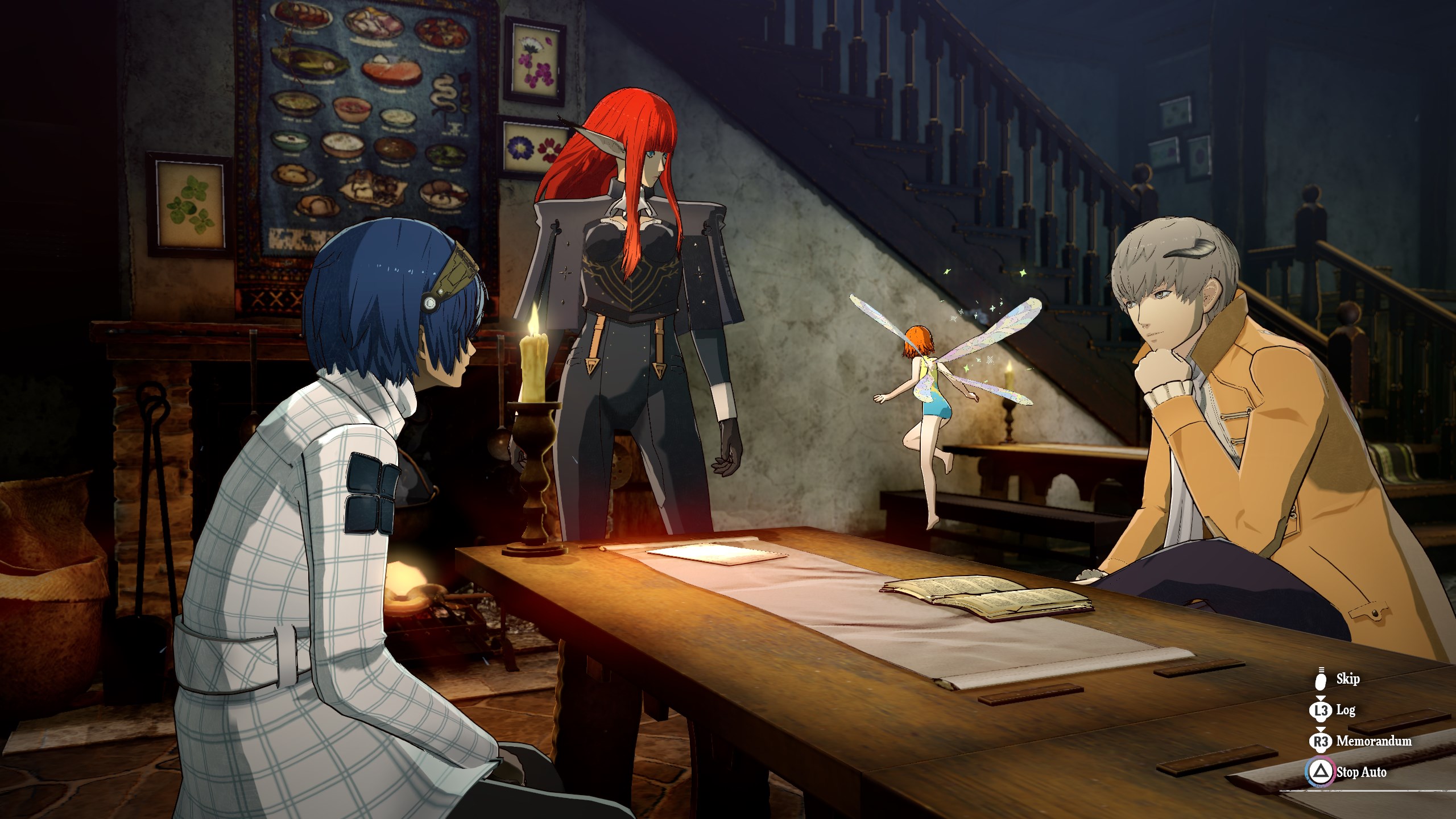
Metaphor is a strange object, one that took me a long time to form an opinion on. As of now, I’m still only about halfway through the game, so I have a bit of reservations when I put this here, but 45 hours into a game feels like a good time to know whether or not you like it, and I quite like it. Metaphor’s transposition of the Persona series formula into a fantasy setting has an odd effect: it makes it kind of unserious. That sounds bad, right? Well, in this case, not really: it has the effect of distancing Metaphor from the kinds of lukewarm critiques of modern society that Persona games have in spades.
The Persona games have meant a lot to me, but I’ve soured a lot on some of their big thematic ideas as the years have gone by, and I found myself going into Metaphor with a lot of skepticism about what it might have to say, and how it might attempt to say it. Well, dozens of hours into the game, it’s clear by now that I really don’t care what Metaphor has to say, because it’s so outwardly silly and its politics are so bizarre that I’m really just not sweating it at this point. It still leans on character drama and personal relationships to drive its moment-to-moment storytelling, and it still has plenty of endearing little guys to hang out with as the in-game calendar progresses forward. In a certain sense, Metaphor is cringe, but it is free.
It’s also just a really finely honed version of the RPG mechanics that make Persona fun. The resource management and dungeon exploration is tight, exciting, and satisfying to overcome. There’s a visceral, aspirational joy that comes from working through goals day by day at maximum efficiency. And just like all the silly politics and wild fantasy racism in Metaphor, I’m just fine not examining that too closely.
#9 — Satisfactory
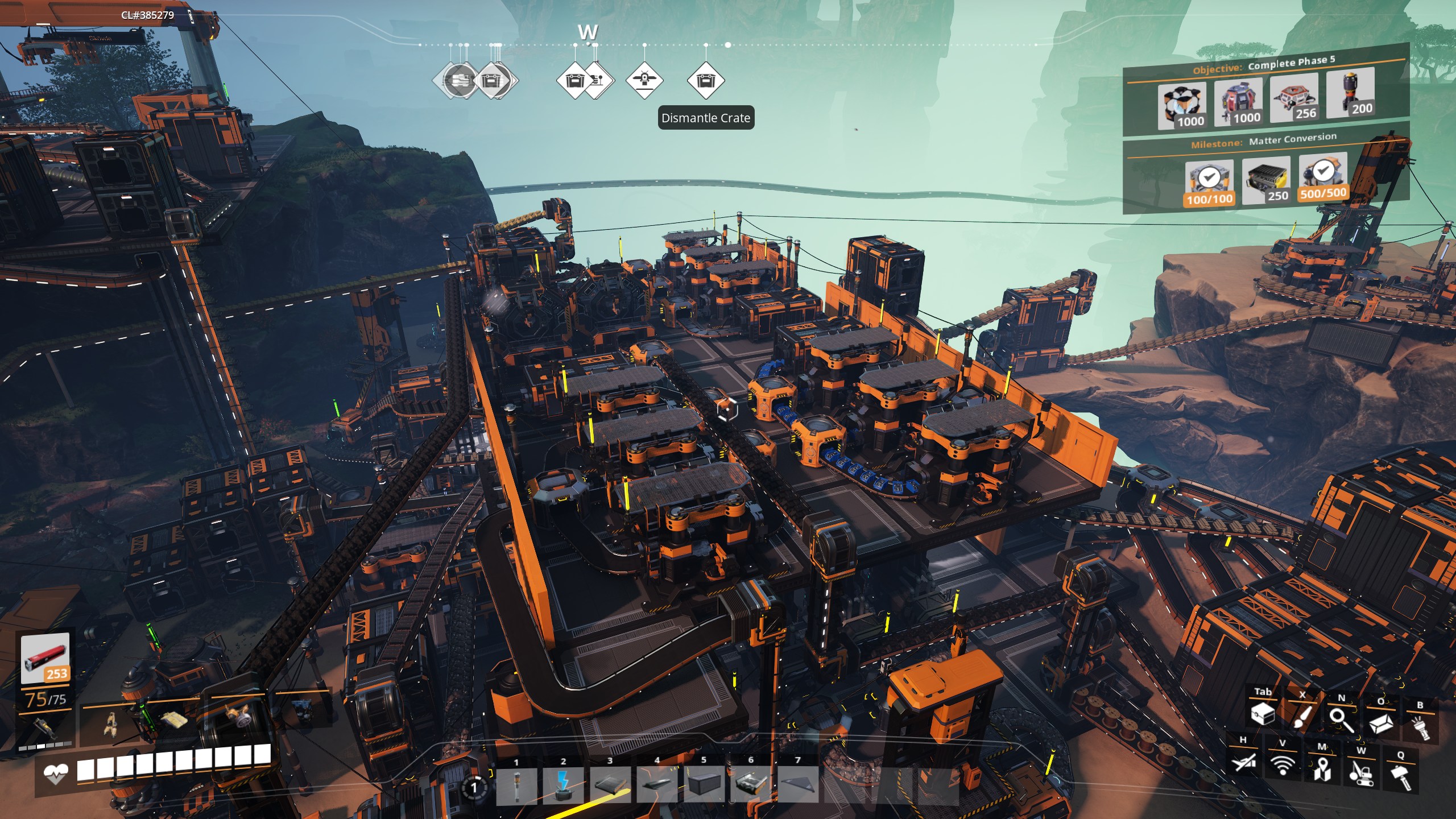
Satisfactory has been around for a few years now, but it hit its 1.0 release this year. I’ve described it to friends as “a depression game”, which people seem to find alarming. I’m completely serious. Satisfactory is a game about completing escalating tasks to build increasingly large quantities of increasingly complex mechanical parts by extracting, smelting, and combining raw ores on a verdant and beautiful planet. These tasks can be automated through elaborate factories composed of conveyor belts and conversion and combination machines, and most things fit together not quite right; getting maximum output of one machine might mean you have to split a belt into 2, or combine 4 outputs into 3 inputs, or overclock this or that, and so on and so forth. You’ll see a problem, have some grand ambition to solve it ✨elegantly✨, and slowly watch that ambition rot into “well I just wanna get some consistent output, even if it’s inefficient and ugly”.
I call it a depression game because it’s a sequence of immaterial problems, that are all shaped like material problems, where planning, forethought, and smart execution result in optimal results, and the degradation to just getting it working still feels pretty damn good to do in a kind of "ignoring my real problems" way. It’s a very specific variation of the “number go up” mentality; it’s not a grind, it’s a drawing board that’s always getting out of control. It’s a game that has popup warnings that tell you when you’ve been playing for 2 hours, or 4 hours, etc. You go there to get lost in meaningless but satisfying tasks. Finally meeting a quota after hours and hours of tinkering things into place and letting it crank out all the parts is… satisfactory.
Satisfactory is, crucially, what I think of as a “podcast game”. It’s an escape from more urgent or grounded mental work, where I can let 30%-volume factory sounds wash over me as a backdrop to whatever familiar media crit podcaster voices I might be listening to. For me, it's been a game for passively absorbing information into a tired brain, all the while building a disastrous sprawl of interconnected machines that felt like a literalized diagram of said tired brain. Satisfactory is a good game, and it’s genuinely fun to muddle through its various open-ended automation objectives. But there’s a reason it has those screen time notifications on by default. It’s a certain kind of escapism, plain and simple. Sometimes I need that, but my relationship with it will always be complicated.
#8 — Prince of Persia: The Lost Crown
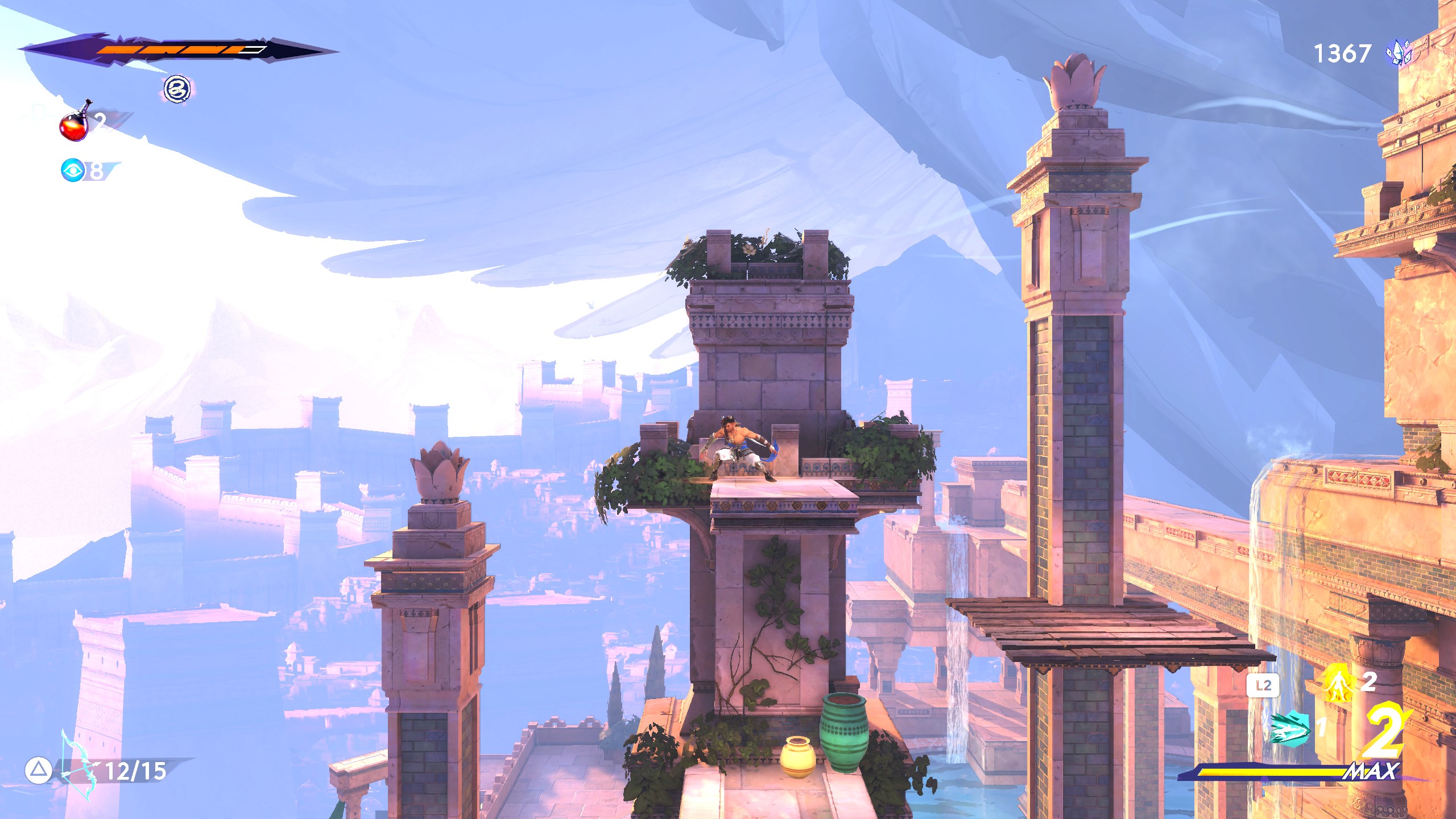
Anyone who knows my taste knows that I’m a bit of a metroidvania sicko, having arrived late to the genre and explored it pretty widely over the years. And while the term "metroidvania" is eternally going out of fashion, I find that the fundamental structure of exploring, unlocking, and overcoming challenges just has a bone-deep appeal to me. That said, there’s a lot of them out there, and it’s not always easy to find what is and isn’t worth my time. This year’s Prince of Persia offshoot was one that was decidedly worth my time.
The Lost Crown is sprawling, full of interesting powers that beautifully interweave themselves into both the (surprisingly rewarding) combat system and the acrobatic exploration and traversal challenges. Its art style has some rough edges, but it manages to be respectably stylish and colorful the vast majority of the time. Boss fights aren’t perfectly consistent but tend to deliver lots of interesting variety and challenge. The storytelling ultimately falls over, despite some striking character designs, but doesn’t waste a ton of your time either. At the end of the day, it’s a big game that gets a ton of mileage out of the cool abilities that it parcels out. It’s just a really good one of these. It’s incredibly frustrating that Ubisoft chose to disband a team that built a phenomenal game just because the publisher's wonky marketing and release strategies didn't drum up enough sales.
#7 — Dragons Dogma 2
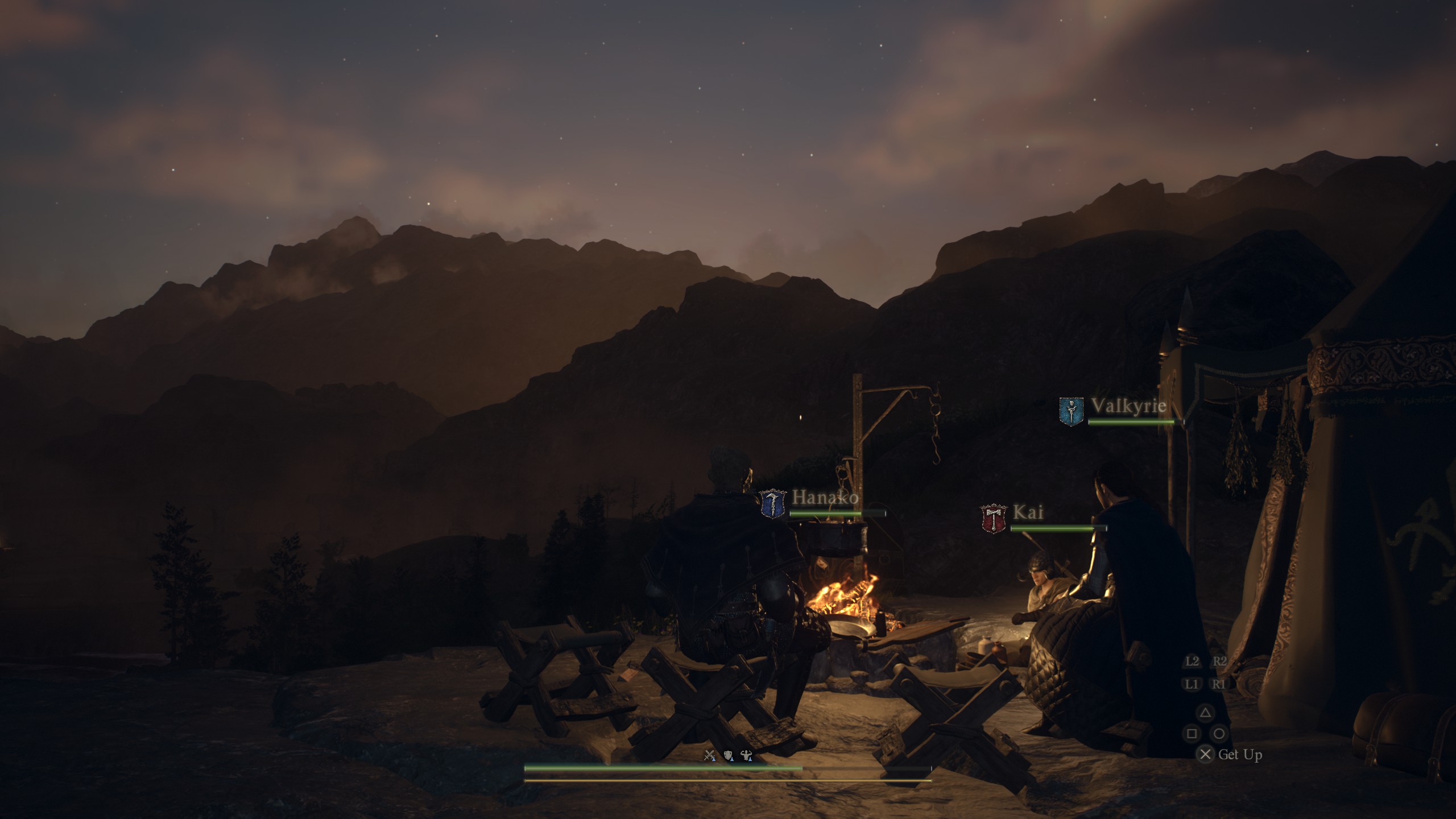
Dragon's Dogma 2 is another awkward addition to the list: I haven’t finished it, and thus haven't actually reached some of the late game twists I’ve been spoiled for. That’s okay. I love what this game is doing with the genre it occupies, and how much it expands on the core ideas of its predecessor. The combat is dynamic and systemic, providing dramatically different play experiences for different classes and different party compositions. Quests can range from silly and frivolous to tragic and cruel. The game is deadly serious about its goofy simulacrum of early modern English accents and turns of phrase, and it feels like a grand pastiche of the high fantasy genre. In general, it’s committedly weird and distinctive.
Dragon’s Dogma 2 was mired in some minor Gamer Controversy over Capcom’s bizarre choice to sell in-game items as microtransactions. The game itself is extremely deliberate about scarcity: items that enable fast travel, allow resting in the wilderness, or let the player character to cheat death once or twice are intentionally challenging to find or stock up on. It’s a game that wants to push you out into the world, back along routes you thought you knew, in search of more secrets. The publisher’s decision to charge impatient players money to skip this is not only comically greedy, but it also frustratingly undermines what are very clearly design goals.
If “they want you to pay for fast travel” is all you heard about this game, consider giving it a proper chance to see what it’s actually doing with these resource limitations. Dragon’s Dogma 2 wants to convey a treacherous world, teeming with monsters but also full of mysteries and treasures that you’ll only find on successive treks through it. It wants great distances to actually feel far, moonless nights to actually feel dark, colossal beasts to actually feel powerful and terrifying. When was the last time you used fast travel so sparingly, so thoughtfully? That’s the point. They knew what they were doing, and it's a world worth hiking across.
#6 — Arctic Eggs
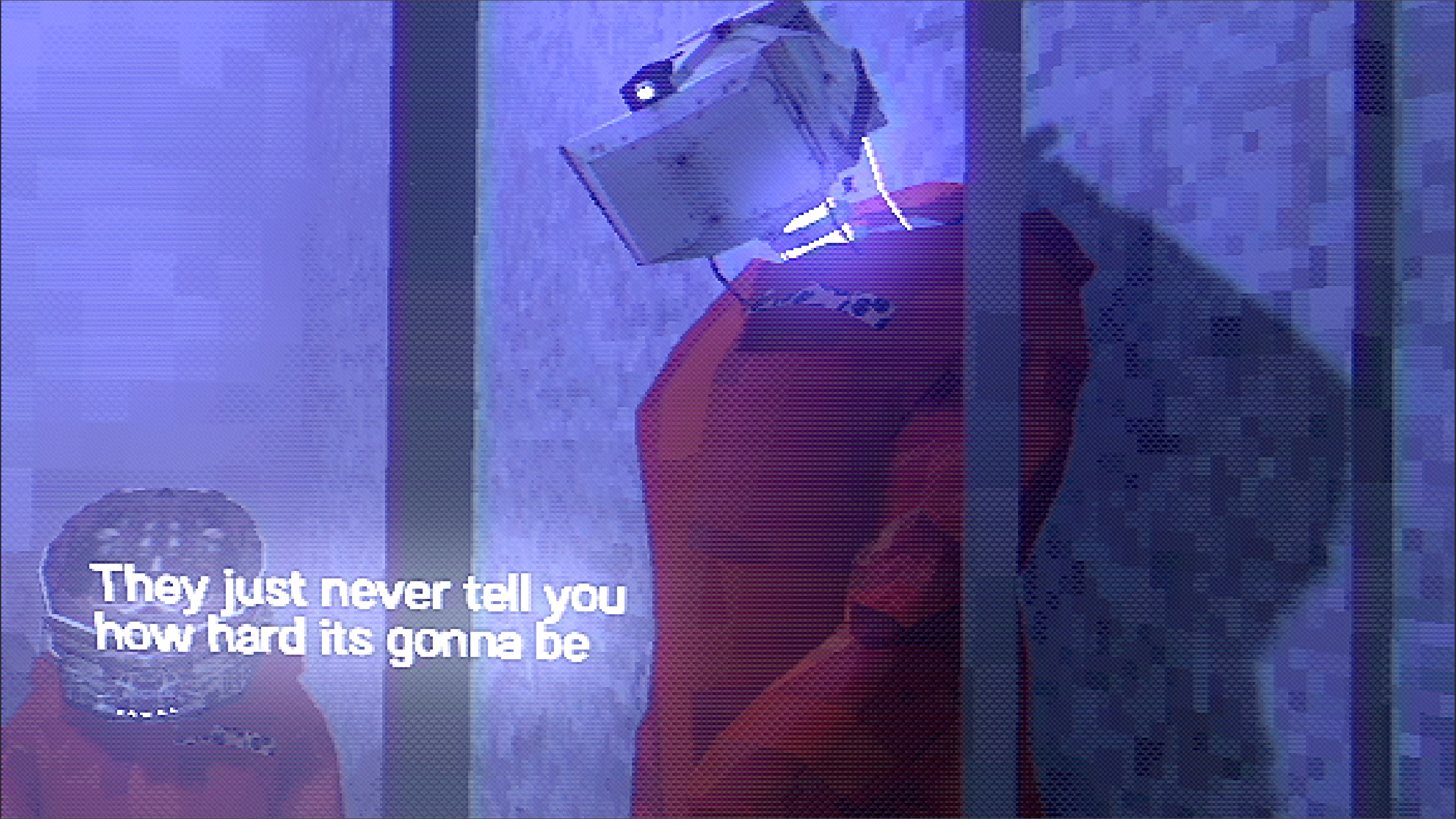
Alright, this is a weird one. It’s hard to explain what’s good about Arctic Eggs, and I think that’s maybe part of the charm. The aesthetic is striking and unnerving, and the storytelling might be doing something deep and ambitious or it might be kind of inscrutable nonsense. What matters is frying eggs.
The game revolves around a core mechanic of simulated pan and egg physics, made complicated by escalating combinations of eggs with other foods and absurd objects like bullets, bugs, and beer bottles. Frying those eggs in the pan, flipping them at the right time, not losing things as you struggle to wrangle what can only loosely be described as ingredients... these tasks are the heart of the game. It’s more challenging than it sounds, and at a couple of points can become outright frustrating. But it’s fun to make those strange concoctions, and the backdrop of a pointedly bizarre space full of pointedly bizarre characters only heightens the experience. It’s perhaps one of the most “vibes-based” games I’ve enjoyed this year, and sometimes that’s all you need.
#5 — Rivals of Aether II
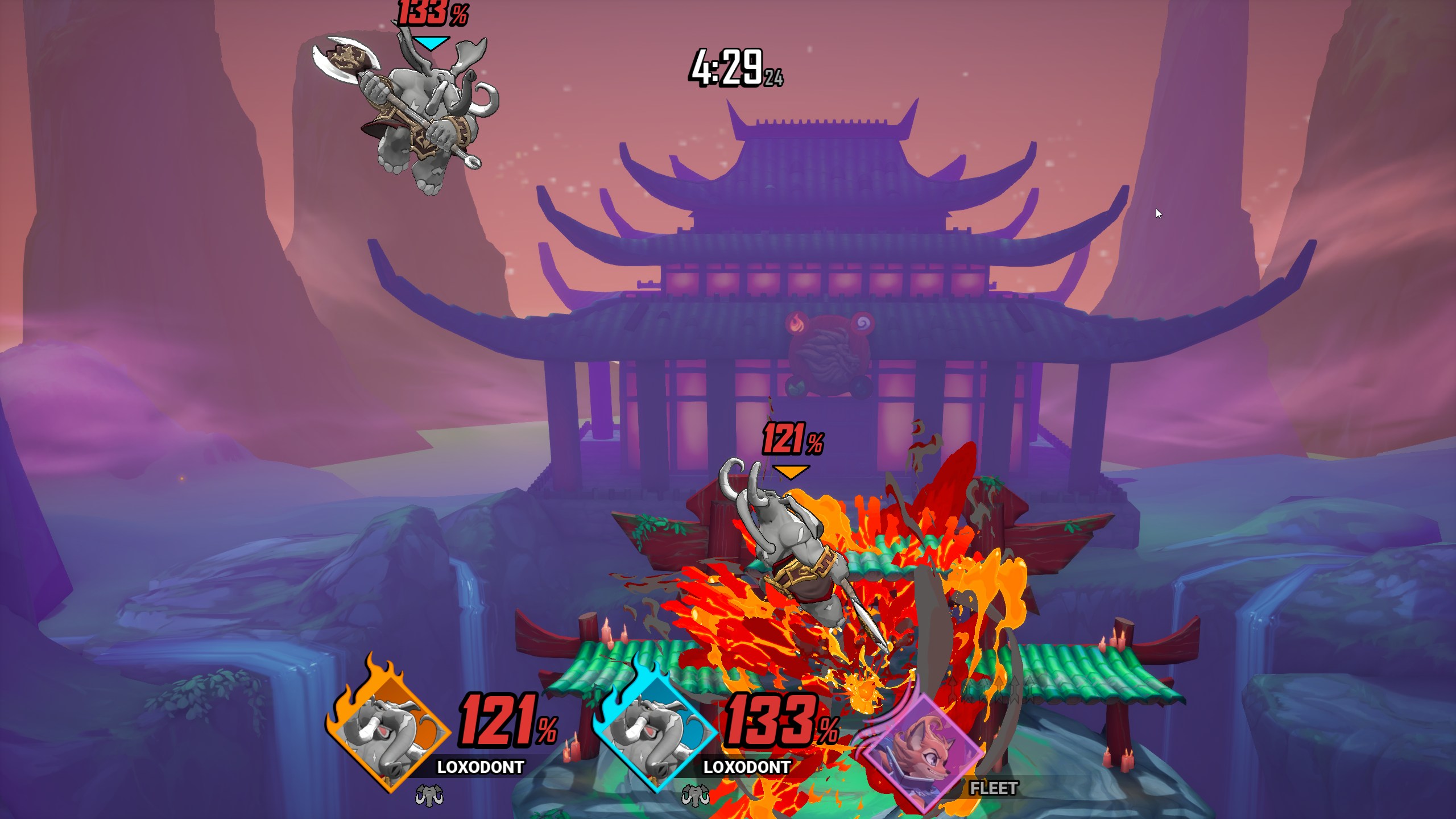
I’m not often one for competitive games. I find them stressful and difficult in a way that isn’t often rewarding for me. For a long time, my only exception to this rule has been Smash Bros., specifically Smash 4 and Smash Ultimate. Nowadays I don’t play Smash all that often, for one glaring reason: its online play experience is really bad.
Rivals of Aether II can’t hold a candle to Smash’s enormous roster and its endless parade of nostalgic characters. But god damn, they are packing a lot into their little indie platform fighter. A sequel to Aether Studios’ 2017 debut title, Rivals II goes from a cute pixel-art aesthetic into a full-fledged cartoony 3D style. They’ve aligned much more closely to Smash Bros. this time, incorporating shields, grabs, and ledge getups into their combat system, but they bring a few extra tricks to deepen movesets: special attacks can be used in a additional ways, and Rivals 1's parry carries over for more varied defensive play. Each character has a dense collection of cool mechanical gimmicks, and they all feel dramatically different and expansive to play.
All of that forms a solid baseline underneath what is perhaps the most important part: Rivals II is a properly-supported online game, with dedicated servers and rollback networking that makes online play smooth and easy, with most of the minor bugs around lobbies and matchmaking getting squashed within the first few months after release. The studio has pledged to make all future roster additions 100% free and included in the base game, and they appear to be hoping that loyal players purchasing premium cosmetics will fund continued support and development. It remains to be seen whether or not the community can sustain the ongoing costs of proper online infrastructure and new character development, but the game is remarkably fun to play and I’m really excited to see how far they can take it. If you’re like me and you no longer have a group to play Smash Ultimate with in person, you very well might find something you’ve been missing in Rivals of Aether II.
#4 — UFO 50
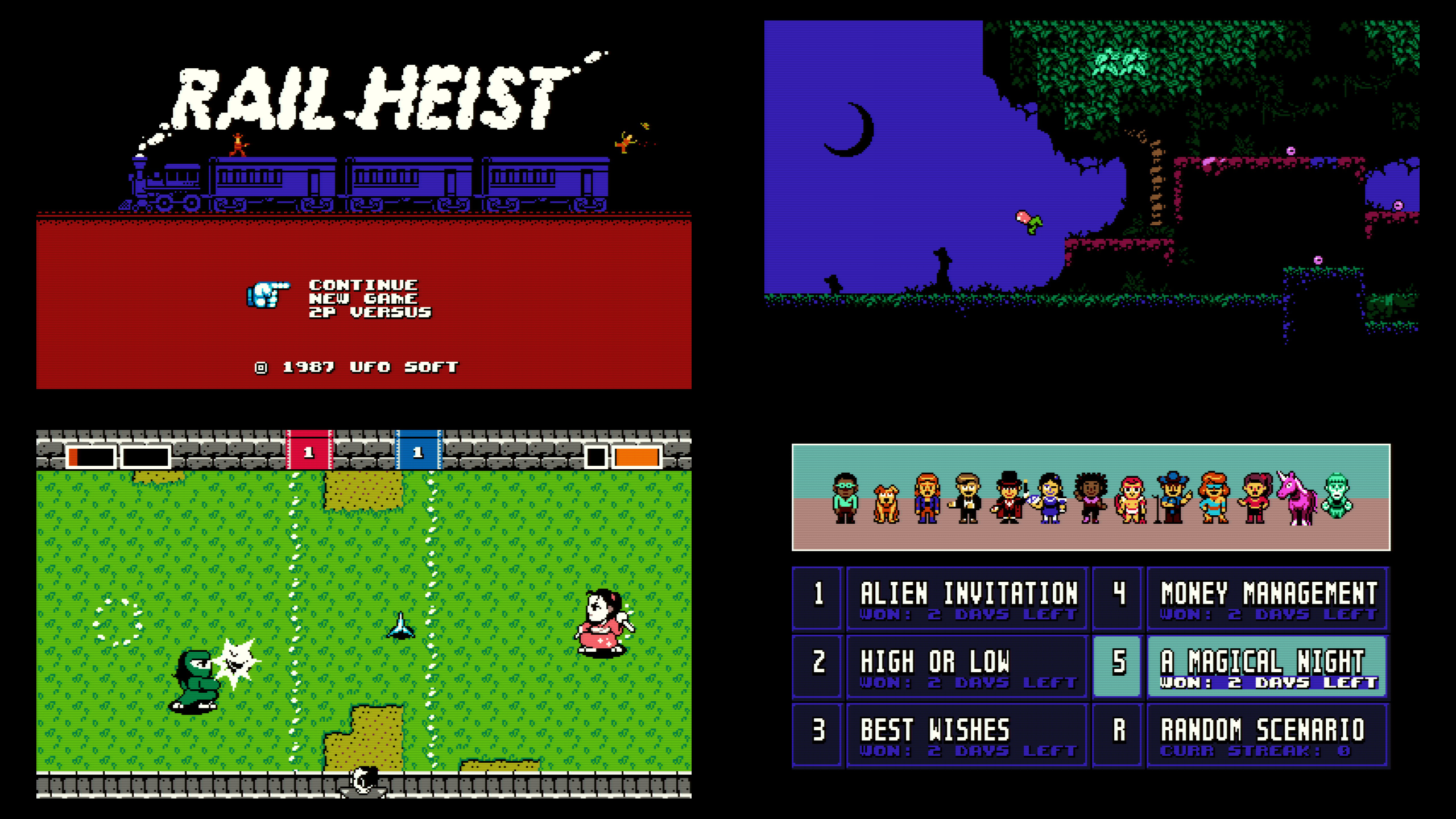
When I was in grade school, my dad randomly installed the Visual Boy Advance GBA emulator on my computer one day. From whereabouts unknown, he dumped a massive collection of downloaded ROMs into a folder, organized by nothing but the alphabet, for my sister and I to explore. I think he just thought it was neat that software like that was so easy to set up. Digging around for treasure in that arbitrary library of games was its own sort of meta-game, an experience that's hard to emulate without… well, emulation.
UFO 50 takes a crack at it anyway. It's a collection of 50 completely original games spanning genres and styles, wrapped in the alternate history veneer of a classic console that never was and the experiments, iterations, and franchises that built its fictional library. Some titles are arcade-like affairs with no saved progress, others high-score chasers, and many have discrete levels or progression. No two games are all that similar, even ones that are framed as direct sequels, and the breadth of genres is really remarkable.
UFO 50 really does capture the appeal of rummaging around in a big library of titles from an era you didn’t personally witness, and it’s full of real gems. Some of its best titles feel searingly unique even despite their retro coats of paint, delivering really clever executions of tight conceptual designs. Some of them I bounced off of quickly, but I never found a game that wasn’t worth feeling out to see if it stuck or didn’t. Many of them even have optional multiplayer, and I could imagine the game being especially delightful if it eventually gets ported to the Nintendo Switch (or its successor).
UFO 50 resists completionism, sometimes by putting challenging scores behind its achievement-like goals, and sometimes by just making games remarkably big or demanding. It boasts a staggering degree of commitment to the bit, and even the smallest and sparsest titles in its library feel like complete and lovingly-made objects, never like demos or prototypes. It’s a reminder that games aren’t unilaterally intended to be mastered or conquered and moved on from, but to be curiously explored, abandoned, revisited. It’s at the intersection of an arcade, a classic console in a dusty box in the closet, and a collection of modern indie games that has accumulated in your Steam library. It's a salve to the value-for-your-dollar discourse that tends to loom over indie game development, while ironically also scoring high marks by that very same measure.
#3 — 1000xRESIST
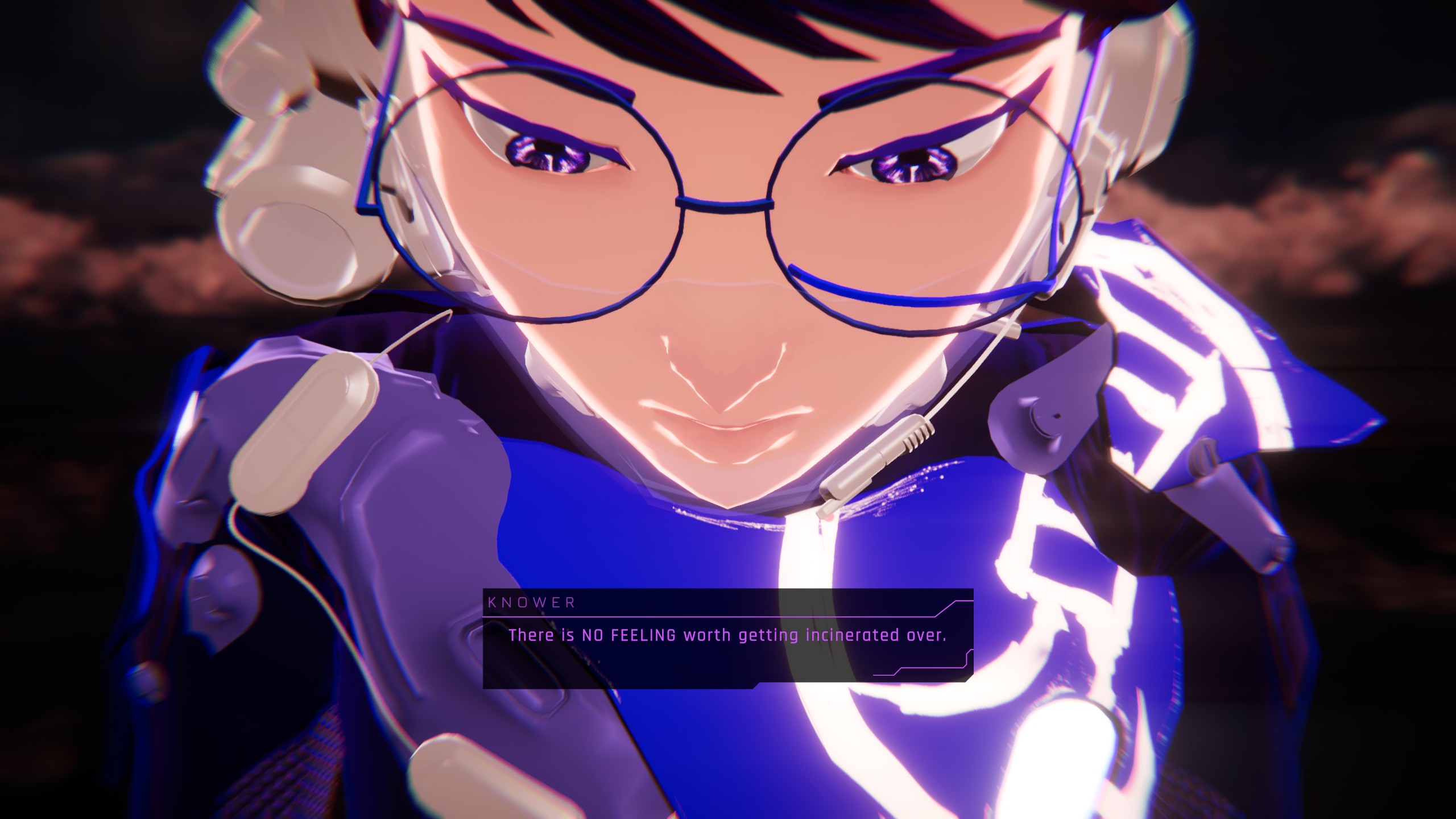
1000xRESIST is a narrative game that centers around alternating sequences of exploring hub areas to talk to their inhabitants and working through more linear dialogue and exploration sequences. It wields a large toolbelt of narrative and theatrical techniques, leaning sometimes on choice-driven dialogue, sometimes on perspective switches, and sometimes on vast dreamlike set pieces to explore.
It’s a bit difficult to describe what the game is actually about. In a literal sense, it follows the story of a society of clones created in the wake of a mysterious and devastating pandemic. But more broadly, it’s about diasporic experience, generational trauma, parenthood, and the terror of disease and apocalypse. It’s core conceit is delivered as a speculative science fiction story, but unfolded through many layers of mysteries around the focal characters and the secrets of their present circumstances. 1000xRESIST is deeply engaging with its ideas and subject matter in a way that repeatedly caught me by surprise with its deftness and nuance. It’s not good because it’s elaborate; it’s elaborate because it has a lot to say and think about.
Its strong writing is delivered with shockingly good direction and spectacular performances by it’s modestly-sized voice cast. Camera angles, lighting and environment design, facial animation, and vocal delivery are constantly evocative and deliberate, and the relatively spare resources used in its art direction are deployed with a myriad of smart decisions. It’s been a fairly long time since I’ve been so captivated by an “art game” of this sort, so it should come as no surprise that it stood out so much.
#2 — Rabbit & Steel
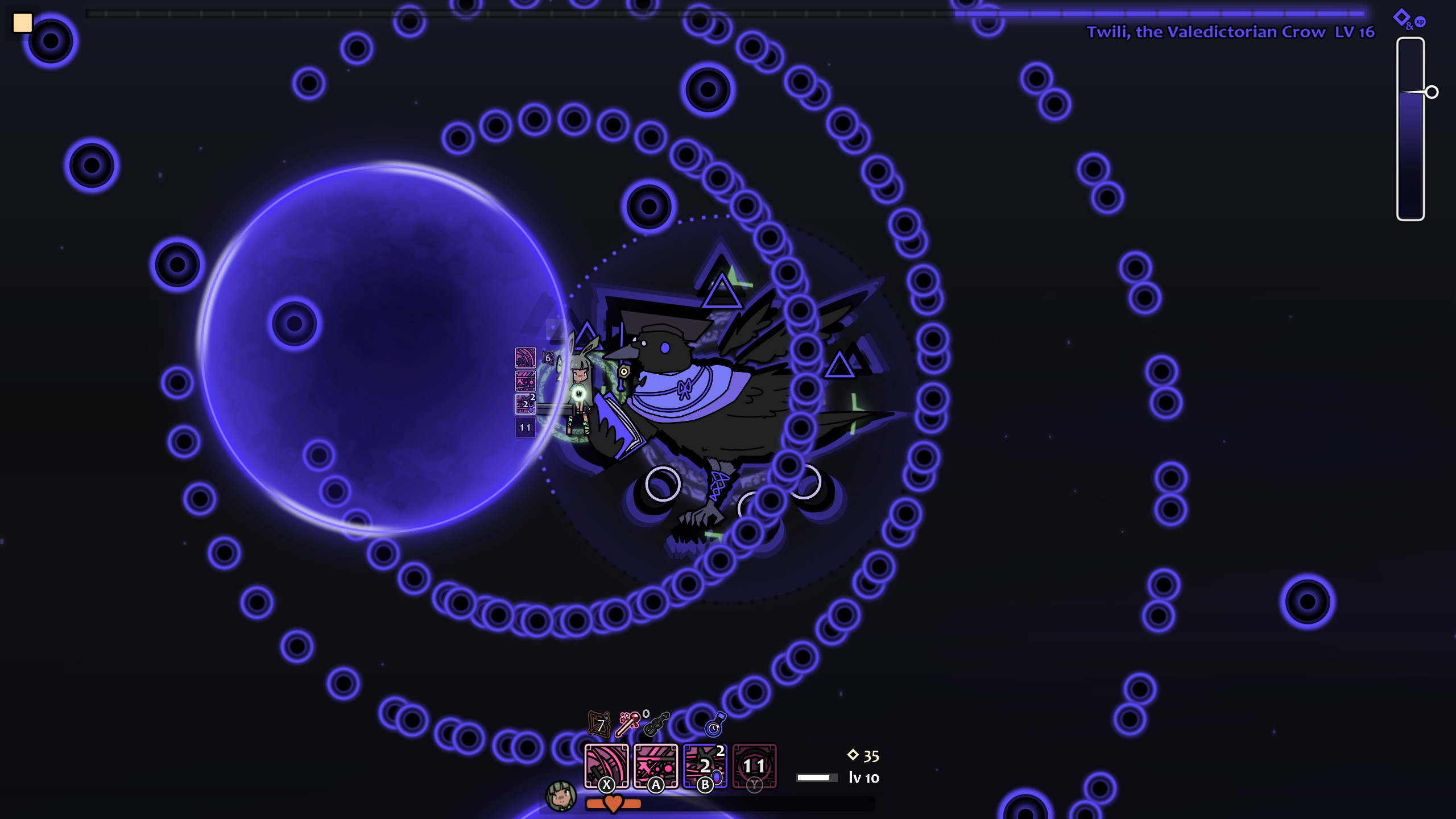
Rabbit & Steel doesn't seem to have been the critical darling that many of the other games on my lists were. I have not seen it appear in any mainstream news outlets' GOTY lists, and I’ve not heard many folks in the circles I follow talking about it. But it was a hit, a big enough success for its solo developer to secure a sturdy future of continued support and future projects. It’s a game that takes the core ideas behind Final Fantasy XIV’s raids and wraps them up into a dense, adorable, roguelike package that delivers engaging multiplayer, challenging bullet-hell-style maneuvering, and — crucially — does not demand hundreds of hours of lead-up before it can be meaningfully engaged with.
The game is played as a series of boss fights interspersed with collectible powerups for movesets designed around maximizing damage output and avoiding dangers. The overall package uses bullet hell mechanics to mimic a Simon-says-style gauntlet of dodging and coordinating around boss attack hitboxes while dishing as much damage as you can with each character’s varying kits. Players will need to work together to avoid harm and maximize their output, and can occasionally bail each other out with carefully timed uses of their defensive abilities. It’s cooperative, but chaotic and precarious in ways not unlike this year’s surprise PvE hit Helldivers 2 (which I also liked a lot, but couldn’t quite fit on this list). The roguelike layer allows each character class’ moveset and tactics to morph dramatically through a run, and the classes provide a nice level of variety right out of the gates.
And similarly to Rivals of Aether II, it’s developer takes the player community very seriously. Rabbit & Steel works like a dream with Steam’s “Remote Play Together” feature, uses game streaming tech to simulate local multiplayer across the internet. With only one copy of the game, I invited friends to hop into my “local” multiplayer session and give it a shot. It’s clear that this was an intentionally supported experience, and it made what might have been a lonely experience (or the more daunting social exercise of playing with strangers) into something that I could easily share with friends without asking them to buy anything.
From top to bottom, Rabbit & Steel is a game about taking something deeply beloved, but highly unapproachable, and sharing it to a new audience. It’s committed to cutting to the chase and delivering the core appeal of grueling late-game MMO raids, all while incorporating multiplayer infrastructure that has a low barrier to entry and a high level of quality and polish. Admittedly, I can’t say for sure whether it succeeds at evoking FFXIV’s raids, but that’s because I’m never going to play those raids. And that’s why it’s so nice that I got to play Rabbit & Steel, and what makes it feel so unique and special.
Small disclosure: I previously worked with mino_dev, the developer of Rabbit & Steel, many years ago. We don’t keep in touch, but I’ve been rooting for him and I’m delighted to see him find an enthusiastic audience.
#1 — Caves of Qud
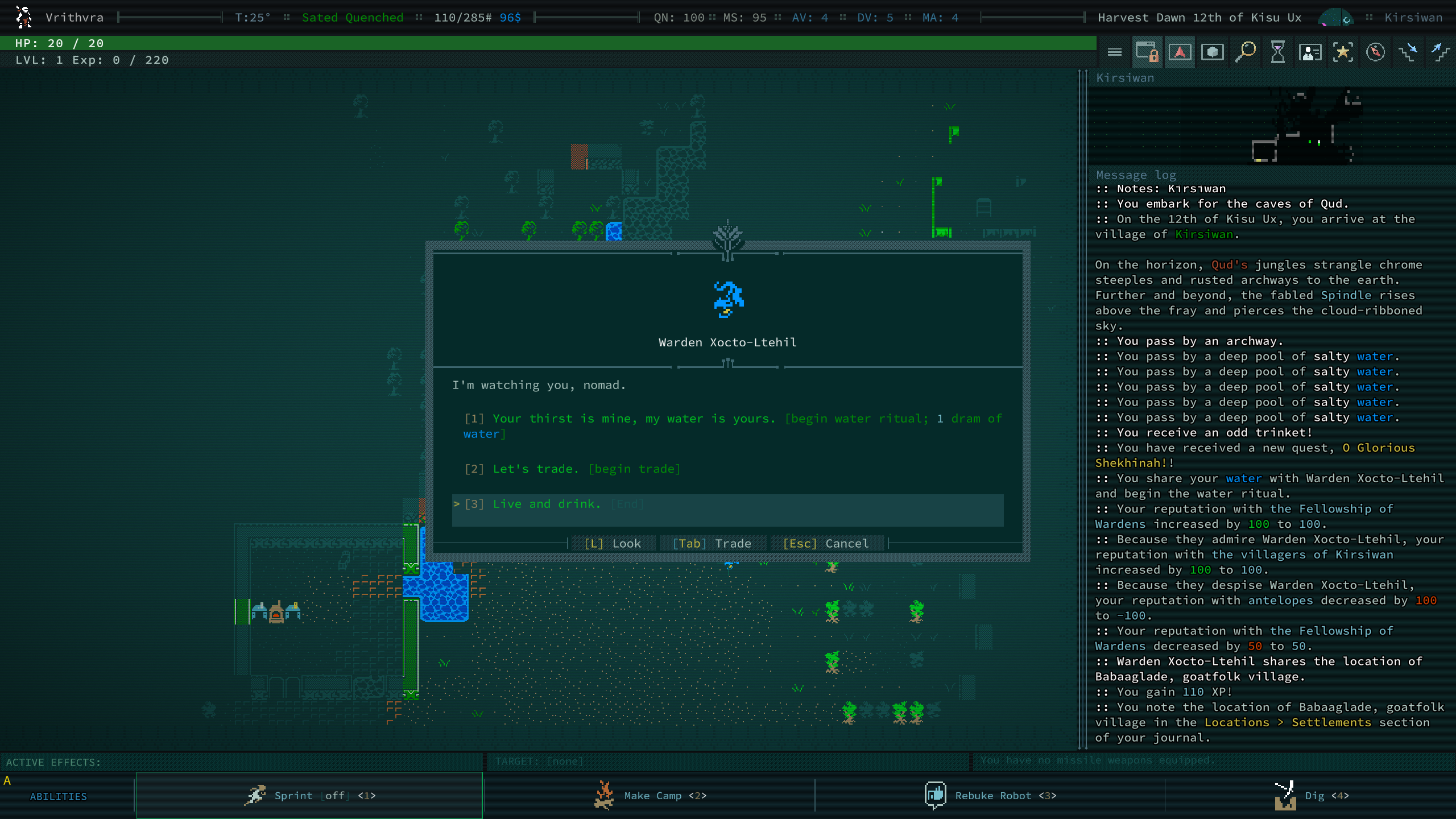
Technically, Caves of Qud has been widely available for nearly a decade, and in development for many years more. But this year, its very small team of developers brought it to a triumphant 1.0 release, complete with a big UI overhaul as a cherry on top.
What exactly is Caves of Qud? Well, on the surface, It’s a classic roguelike RPG with a lovely console-style interface and an emphasis on deep simulation. Beneath that surface, it’s an unfathomably large world, constructed from a delicate mixture of bespoke design and procedural generation. Exploring the world of Qud involves tangling with a frankly absurd combination of intersecting systems and strange character abilities, all while picking your way though a heady slurry of science fiction, weird fantasy, and post-apocalyptica. A cursory peek into the communities or let's-play footage around Caves of Qud will tell you just how deep this rabbit hole goes, and how elaborately the game can both punish and reward your machinations.
One character I played was a psychic, capable of shooting mind lasers at anyone who upset me. Because of my access to this unseen psychic energy, I was hunted by other psychics who hoped to absorb my power. One such altercation resulted in me attempting to terrify my opponent, who had reflective mental shields. I spent several turns fleeing in terror from myself, before finally having an opportunity to intimidate them in a more mundane sense, at which point my companion finished our grim work. I continued to flee from myself for a while. Absurd as this was, it's nothing compared to the stories you'll see in threads or promised insanity you'll see in youtube thumbnails.
Qud is one of the most impressive video game settings I’ve ever seen, full stop. It’s steeped in phenomenal prose, a deep sense of awe and melancholy, and an ever-present thread of dark humor. I owe this game a lot more time and exploration than I’ve currently spent, not only to see more strange corners of it’s world, but also to dig into the iceberg below the surface that is its systems and simulation. Caves of Qud does the thing that simulation and procedural generation are endlessly striving to achieve: it generates stories. The bizarre interactions that the game allows tend to unfold into wild adventures that seem impossible for a video game to create. Not only that, but the detailed procedural history and language systems generate an impossibly fine-grained continuum between beautiful hand-written prose and delightfully absurd procedural descriptions. I’m not generally willing to throw around the word “masterpiece”, but Caves of Qud very well might be one.